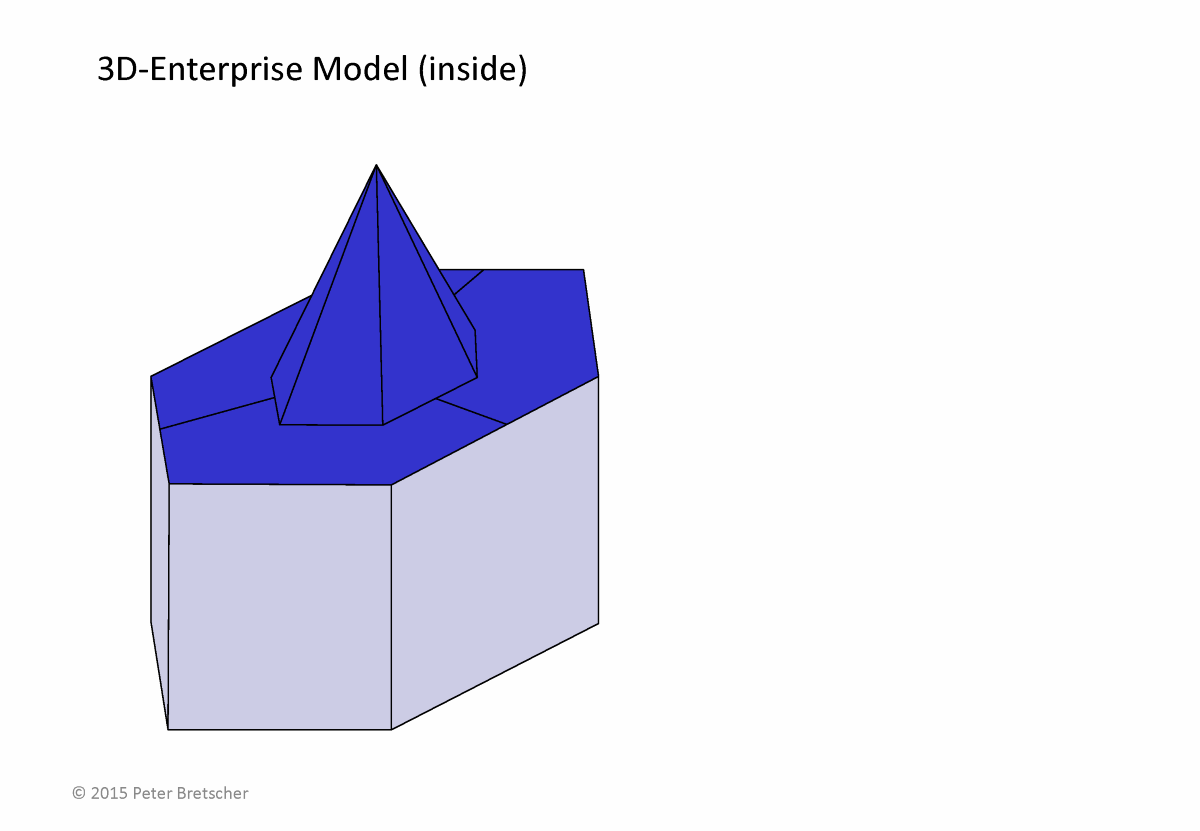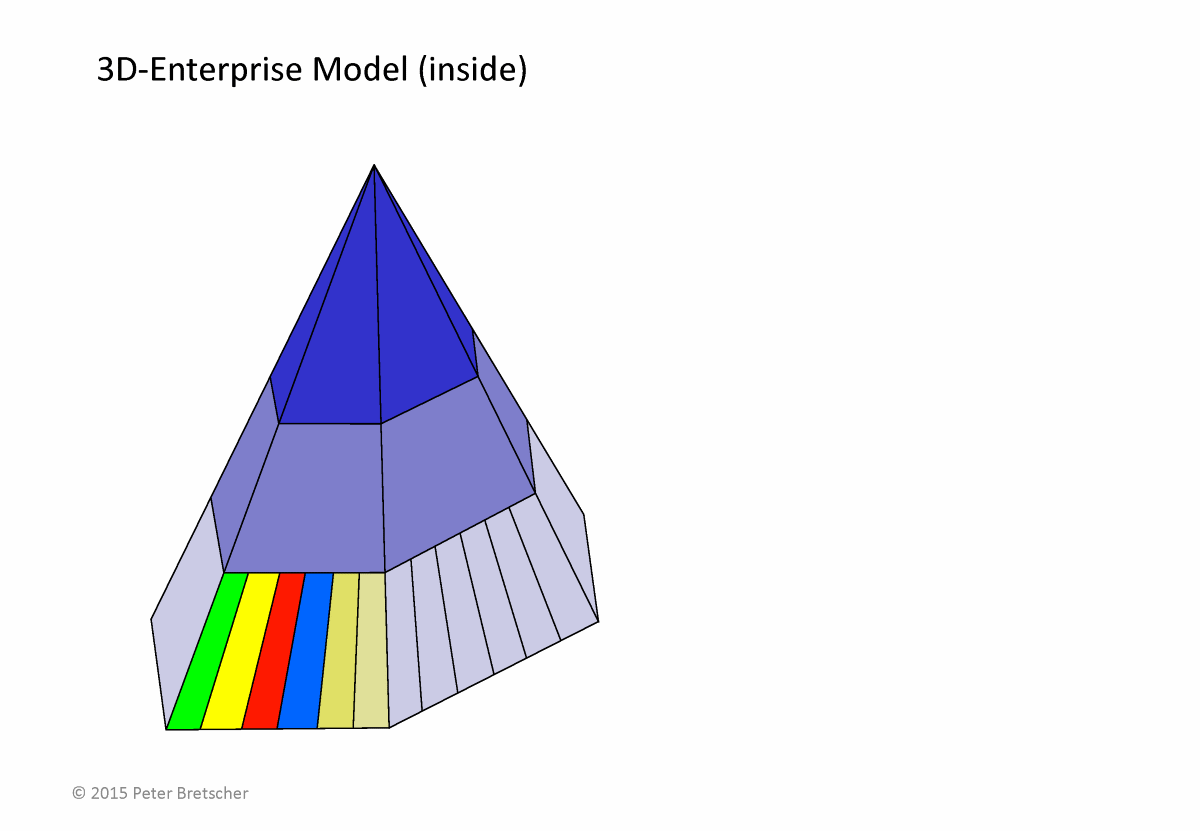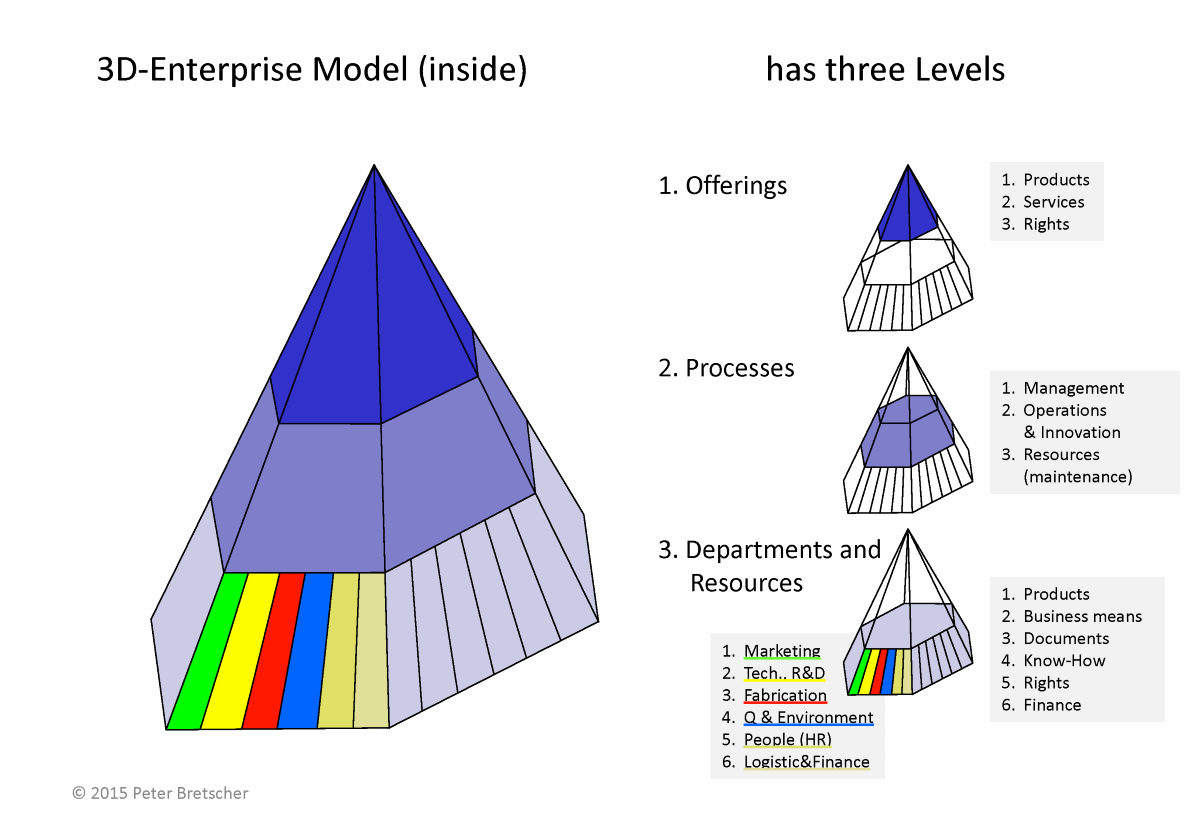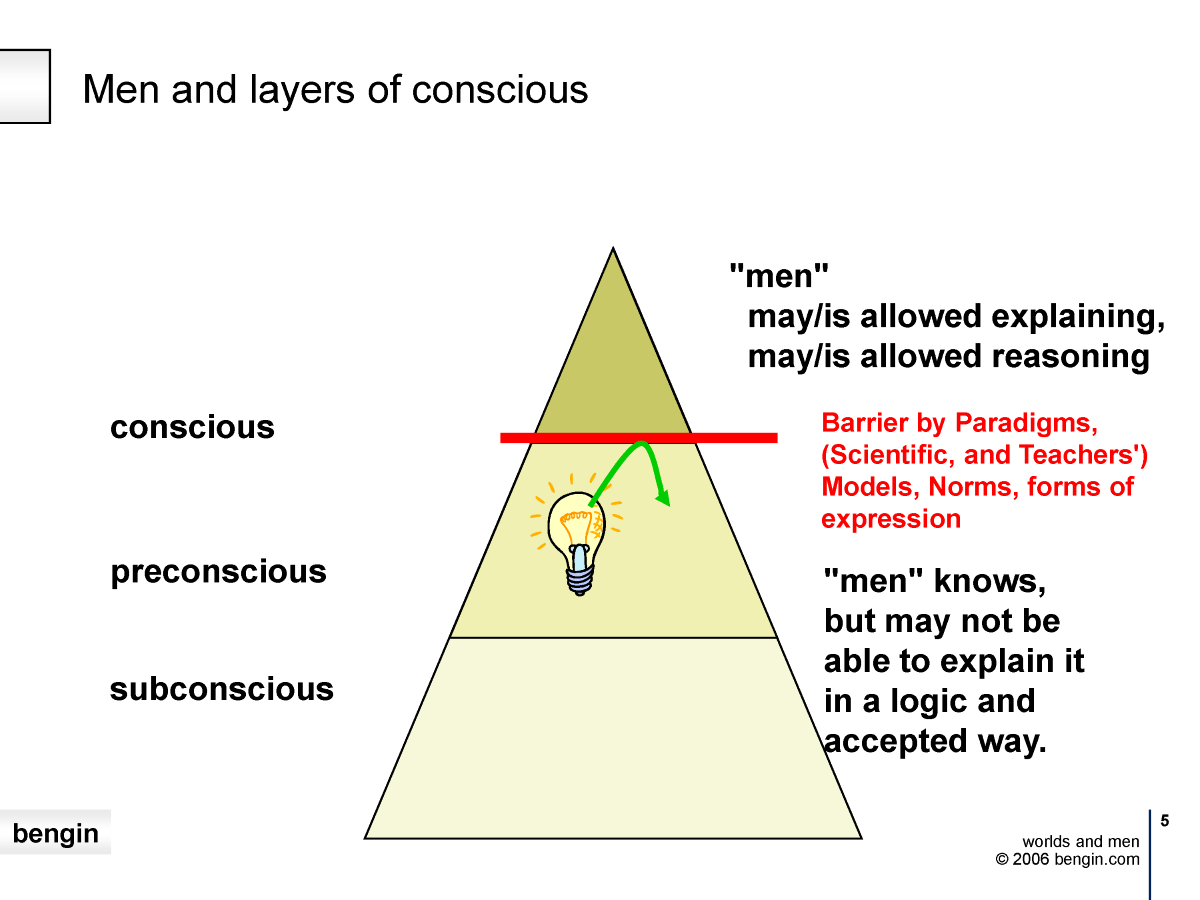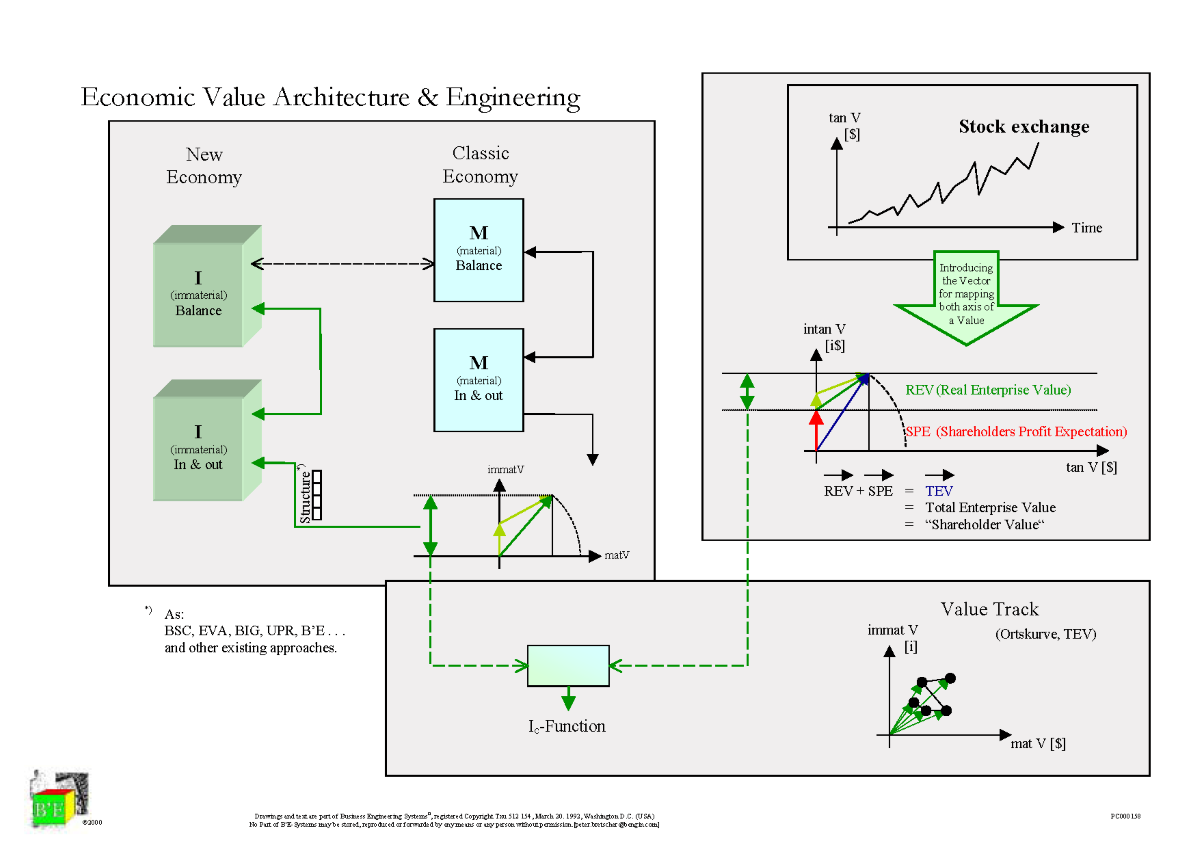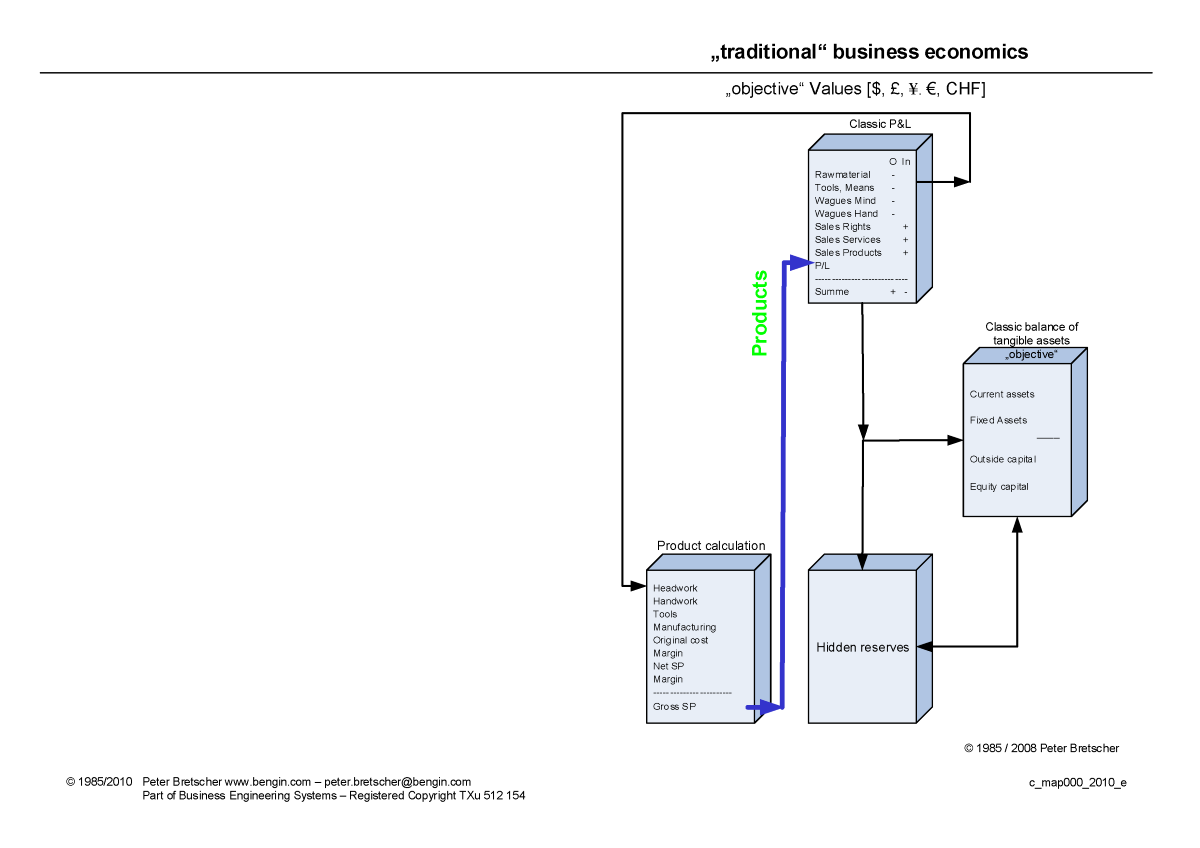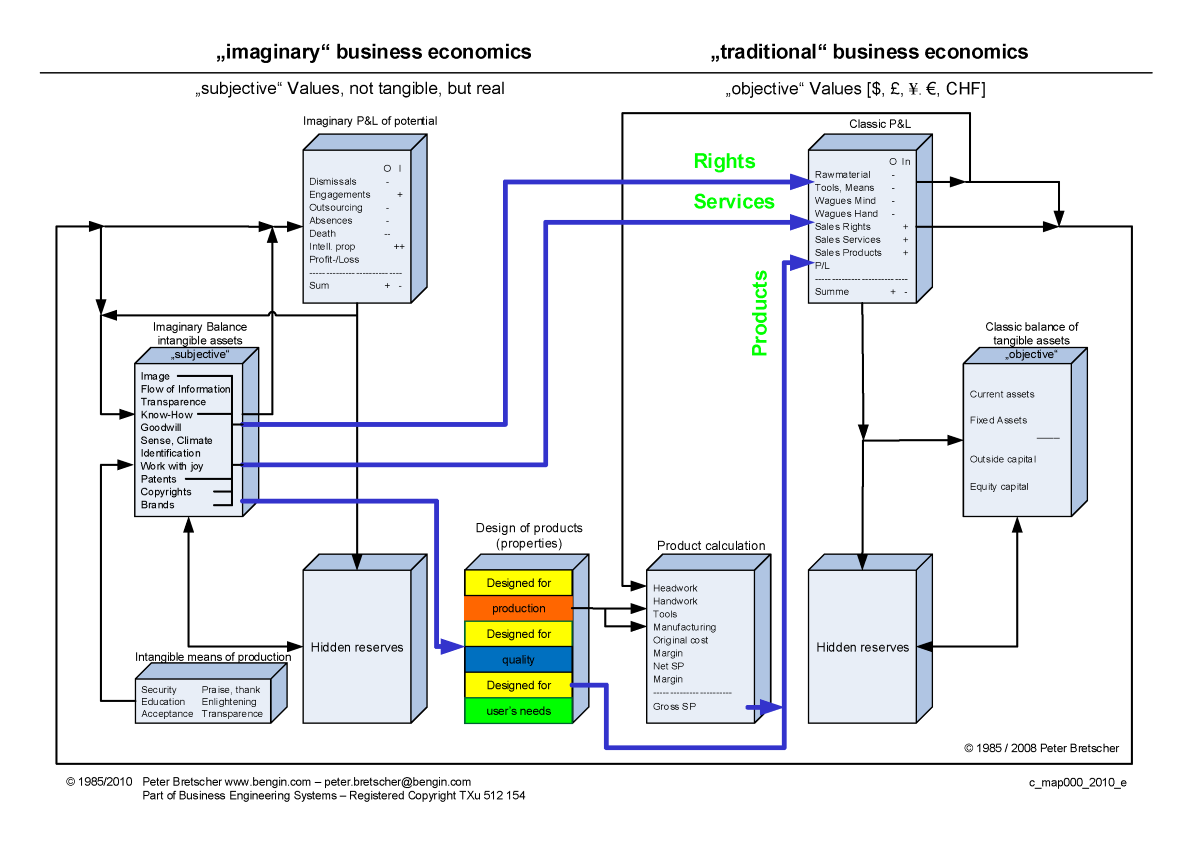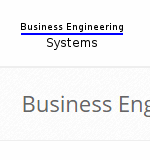The structure of an organization at three levels (Offerings, Processes and Resources) in the "Business Engineering System" makes it possible to better recognize the potential and capture new opportunities.
This 3D model gives the manager new insights to re-detect the available resources and potential. It simplifies communication with employees and facilitates the implementation of new opportunities and strategies in the team.
Such (complementary) strategies, which build on the existing skills of the employees, are better supported by the employees and significantly improve the efficiency of the company.
And finally: Beyond increased performance. It is this perception of reality that also contributes to a "true and fair view" of a company that auditors should attest.
Click here for downloading the pyramid as pdf.
In PDF format, it is possible with the built-in magnifying glass to enlarge the rather small fonts and view the details.
These illustrations are part of the Business Engineering Systems. The systems and their parts are protected by copyright. Registered Copyright TXu 512 154.
For commercial use and the development of derivative works, we offer affordable licenses.
The use of our templates and commercial licenses is the fastest, safest and cheapest solution to build on our developments and adapt them optimally to your individual environment.

Go to 3D-Models (opens new page)
Controllers map in 3D

Recognize the existing potentials and their interrelationships. That which is not (yet) shown in the classical models.
Go to 3D-Models (opens new page)
Enterprise model
Make your individual, real three-dimensional enterprise model with the three levels:
Offerings, Processes, Resources


